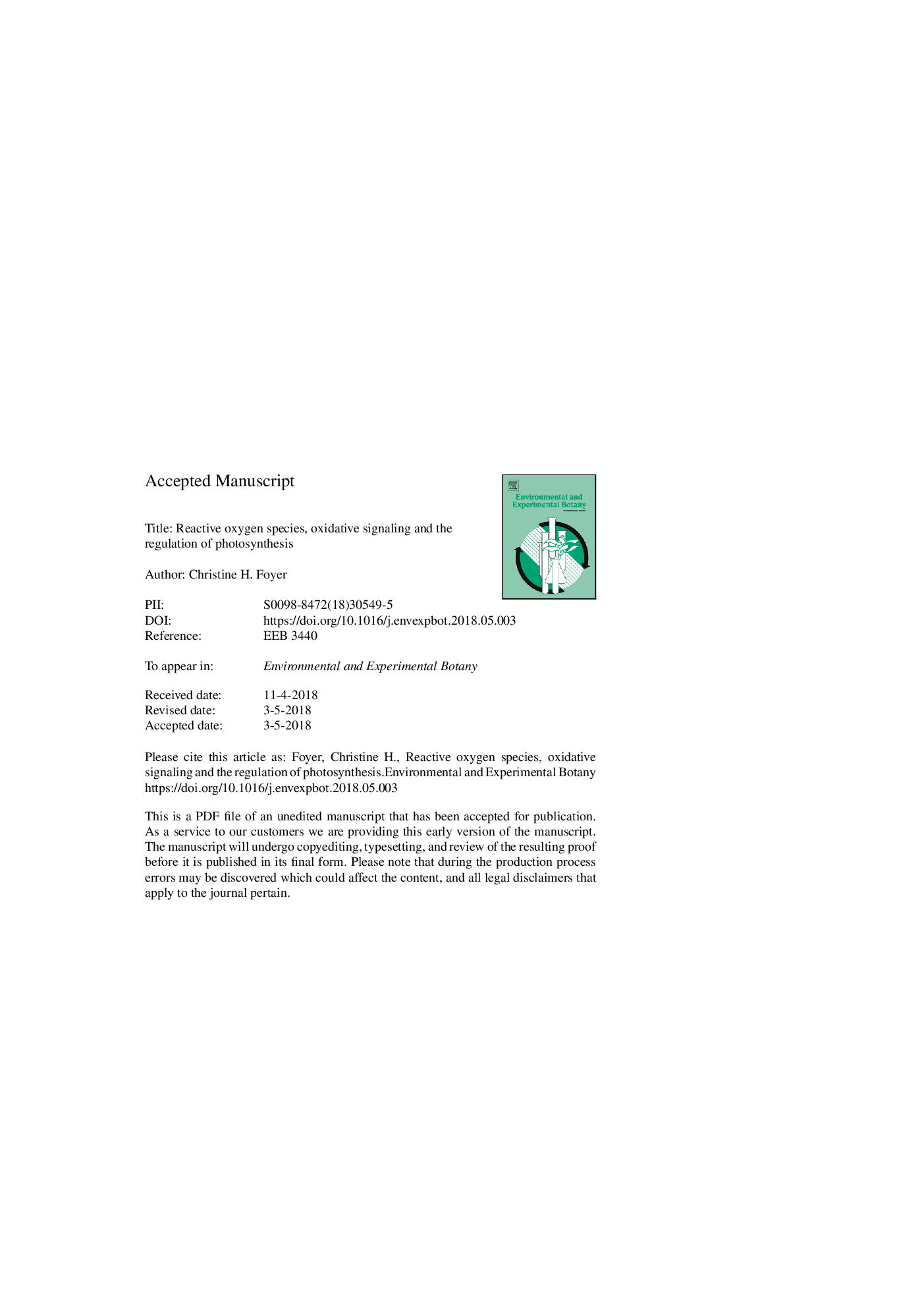| کد مقاله | کد نشریه | سال انتشار | مقاله انگلیسی | نسخه تمام متن |
|---|---|---|---|---|
| 8886856 | 1628023 | 2018 | 39 صفحه PDF | دانلود رایگان |
عنوان انگلیسی مقاله ISI
Reactive oxygen species, oxidative signaling and the regulation of photosynthesis
ترجمه فارسی عنوان
گونه های واکنشی اکسیژن، سیگنال اکسیداتیو و تنظیم
دانلود مقاله + سفارش ترجمه
دانلود مقاله ISI انگلیسی
رایگان برای ایرانیان
کلمات کلیدی
NPQHydrogen peroxide - آب اکسیژنهAscorbate - آسکوربات یا ویتامین ثAntioxidants - آنتی اکسیدانPost translational modifications - اصلاحات ترجمه پستEpigenetics - اپی ژنتیکSinglet oxygen - اکسیژن مجزاhigh light - برجستهAcclimation - سازگاریRedox signaling - سیگنالینگ RedoxPhotoinhibition - عکسبرداریphotodamage - عکسبرداریPhotosynthesis - فتوسنتزPhotosystem II - فتوسیستم 2Mehler reaction - واکنش ملاکPeroxiredoxins - پروکسیریدوکسین هاGlutathione - گلوتاتیونReactive oxygen species - گونههای فعال اکسیژن
موضوعات مرتبط
علوم زیستی و بیوفناوری
علوم کشاورزی و بیولوژیک
بوم شناسی، تکامل، رفتار و سامانه شناسی
چکیده انگلیسی
Reduction-oxidation (redox) reactions, in which electrons move from a donor to an acceptor, are the functional heart of photosynthesis. It is not surprising therefore that reactive oxygen species (ROS) are generated in abundance by photosynthesis, providing a plethora of redox signals as well as functioning as essential regulators of energy and metabolic fluxes. Chloroplasts are equipped with an elaborate and multifaceted protective network that allows photosynthesis to function with high productivity even in resource-limited natural environments. This includes numerous antioxidants with overlapping functions that provide enormous flexibility in redox control. ROS are an integral part of the repertoire of chloroplast signals that are transferred to the nucleus to convey essential information concerning redox pressure within the electron transport chain. Current evidence suggests that there is specificity in the gene-expression profiles triggered by the different ROS signals, so that singlet oxygen triggers programs related to over excitation of photosystem (PS) II while superoxide and hydrogen peroxide promote the expression of other suites of genes that may serve to alleviate electron pressure on the reducing side of PSI. Not all chloroplasts are equal in their signaling functions, with some sub-populations appearing to have better contacts/access to the nucleus than others to promote genetic and epigenetic responses. While the concept that light-induced increases in ROS result in damage to PSII and photoinhibition is embedded in the photosynthesis literature, there is little consensus concerning the extent to which such oxidative damage happens in nature. Slowly reversible decreases in photosynthetic capacity are not necessarily the result of light-induced damage to PSII reaction centers.
ناشر
Database: Elsevier - ScienceDirect (ساینس دایرکت)
Journal: Environmental and Experimental Botany - Volume 154, October 2018, Pages 134-142
Journal: Environmental and Experimental Botany - Volume 154, October 2018, Pages 134-142
نویسندگان
Christine H. Foyer,
